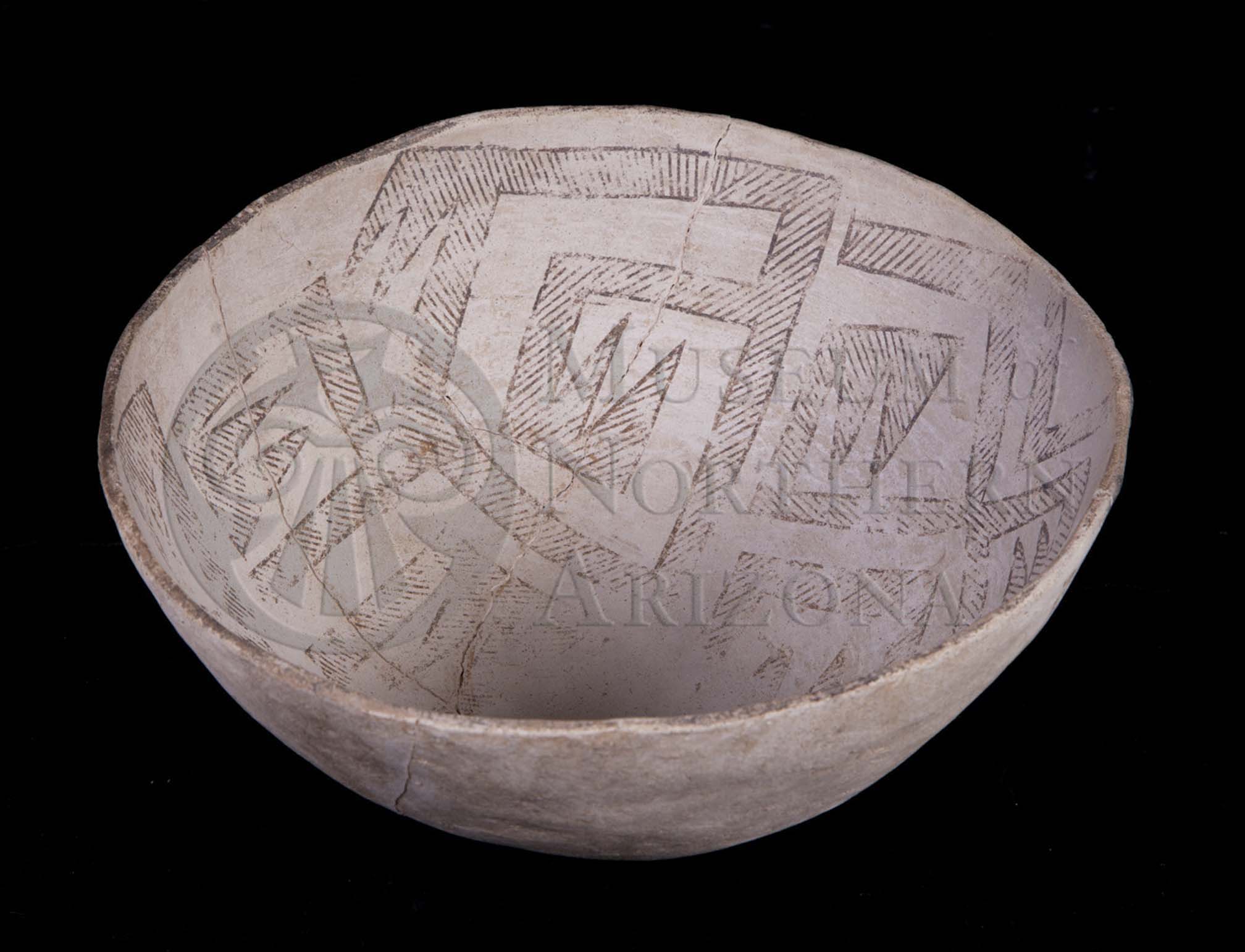
Chaco Black-on-white bowl from the Museum of Northern Arizona collections. Click the image to open the Chaco Black-on-white gallery.
Chaco Black-on-white is a type of Cibola White Ware produced in Chaco Canyon, New Mexico.
Archaeological Culture: Ancestral Puebloan
Date Range: ca. A.D. 1050-1225.
Construction: By coiling.
Firing: In a neutral to reducing atmosphere.
Core Color: White to light gray.
Carbon Streak: Occasional.
Temper: Sherd and sand.
Surface Finish: Often thinly slipped with streaks; slip is often chalky; rarely unslipped; polished and not polished.
Surface Color: White to light gray.
Forms: Bowls, jars, pitchers, mugs, effigies.
Decoration:
- Paint: Matte black to brown to reddish brown.
- Pigments: Mineral, occasionally mixed with some organics.
- Design: Parallel bands with diagonal and occasional horizontal hatching; hatch-filled triangles; solids present only occasionally and as minor elements or filler in hatched designs; framing lines twice as thick at hatching lines.
Comparisons: Distinguished from Gallup Black-on-white by finer hatching, wider framing lines, and black-painted rims.
Compiled from the following sources:
Kintigh, Keith, Greg Schachner, and Josh Watts. (2003) El Morro Valley Prehistory Project Ceramic Guide (link opens in new window), Arizona State University, Tempe.
Plog, Stephen. (2003) Exploring the Ubiquitous through the Usual: Color Symbolism in Pueblo Black-on-white Pottery. American Antiquity 68(4):665-695.
Compiled by:
Meghann M. Vance, Northern Arizona University Anthropology Laboratories.
